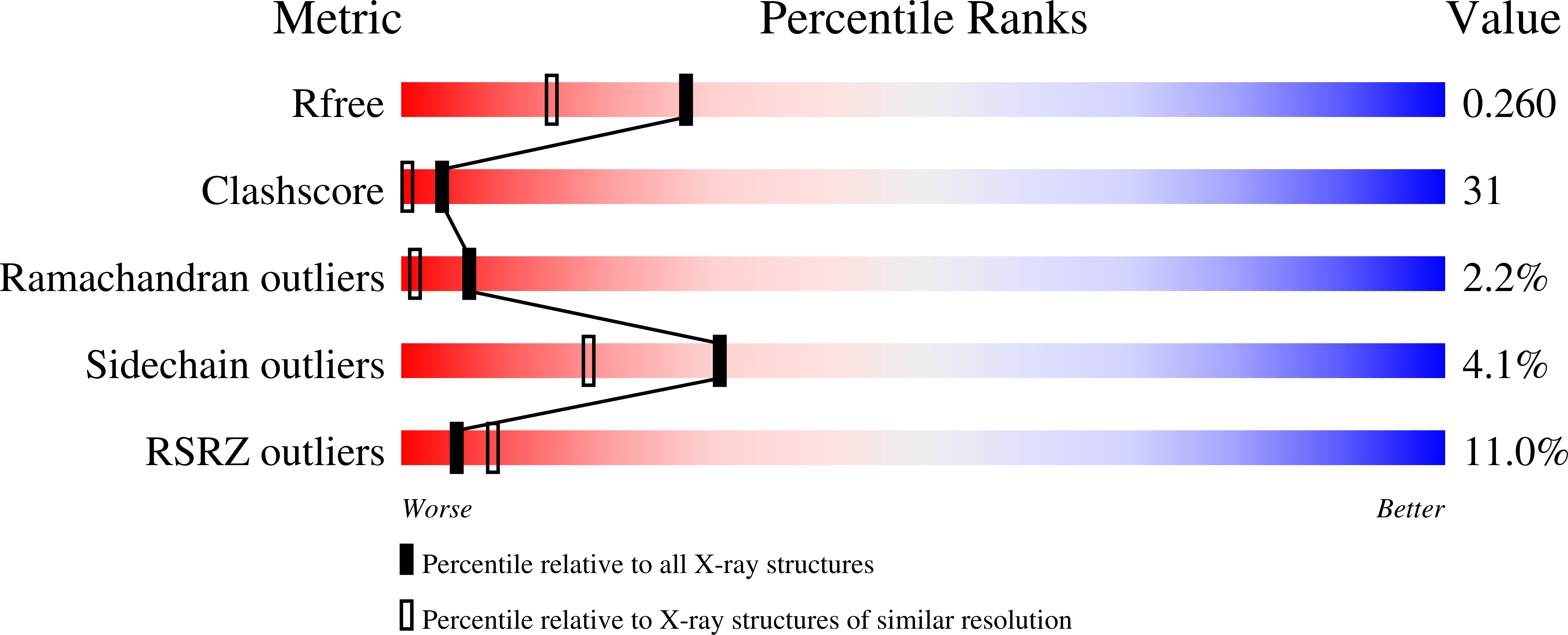G-protein signaling through tubby proteins.
Santagata, S., Boggon, T.J., Baird, C.L., Gomez, C.A., Zhao, J., Shan, W.S., Myszka, D.G., Shapiro, L.(2001) Science 292: 2041-2050
- PubMed: 11375483
- DOI: https://doi.org/10.1126/science.1061233
- Primary Citation of Related Structures:
1I7E - PubMed Abstract:
Dysfunction of the tubby protein results in maturity-onset obesity in mice. Tubby has been implicated as a transcription regulator, but details of the molecular mechanism underlying its function remain unclear. Here we show that tubby functions in signal transduction from heterotrimeric GTP-binding protein (G protein)-coupled receptors. Tubby localizes to the plasma membrane by binding phosphatidylinositol 4,5-bisphosphate through its carboxyl terminal "tubby domain." X-ray crystallography reveals the atomic-level basis of this interaction and implicates tubby domains as phosphorylated-phosphatidyl- inositol binding factors. Receptor-mediated activation of G protein alphaq (Galphaq) releases tubby from the plasma membrane through the action of phospholipase C-beta, triggering translocation of tubby to the cell nucleus. The localization of tubby-like protein 3 (TULP3) is similarly regulated. These data suggest that tubby proteins function as membrane-bound transcription regulators that translocate to the nucleus in response to phosphoinositide hydrolysis, providing a direct link between G-protein signaling and the regulation of gene expression.
Organizational Affiliation:
Ruttenberg Cancer Center, Structural Biology Program, Department of Physiology and Biophysics, Mount Sinai School of Medicine of New York University, 1425 Madison Avenue New York, NY 10029, USA.



















